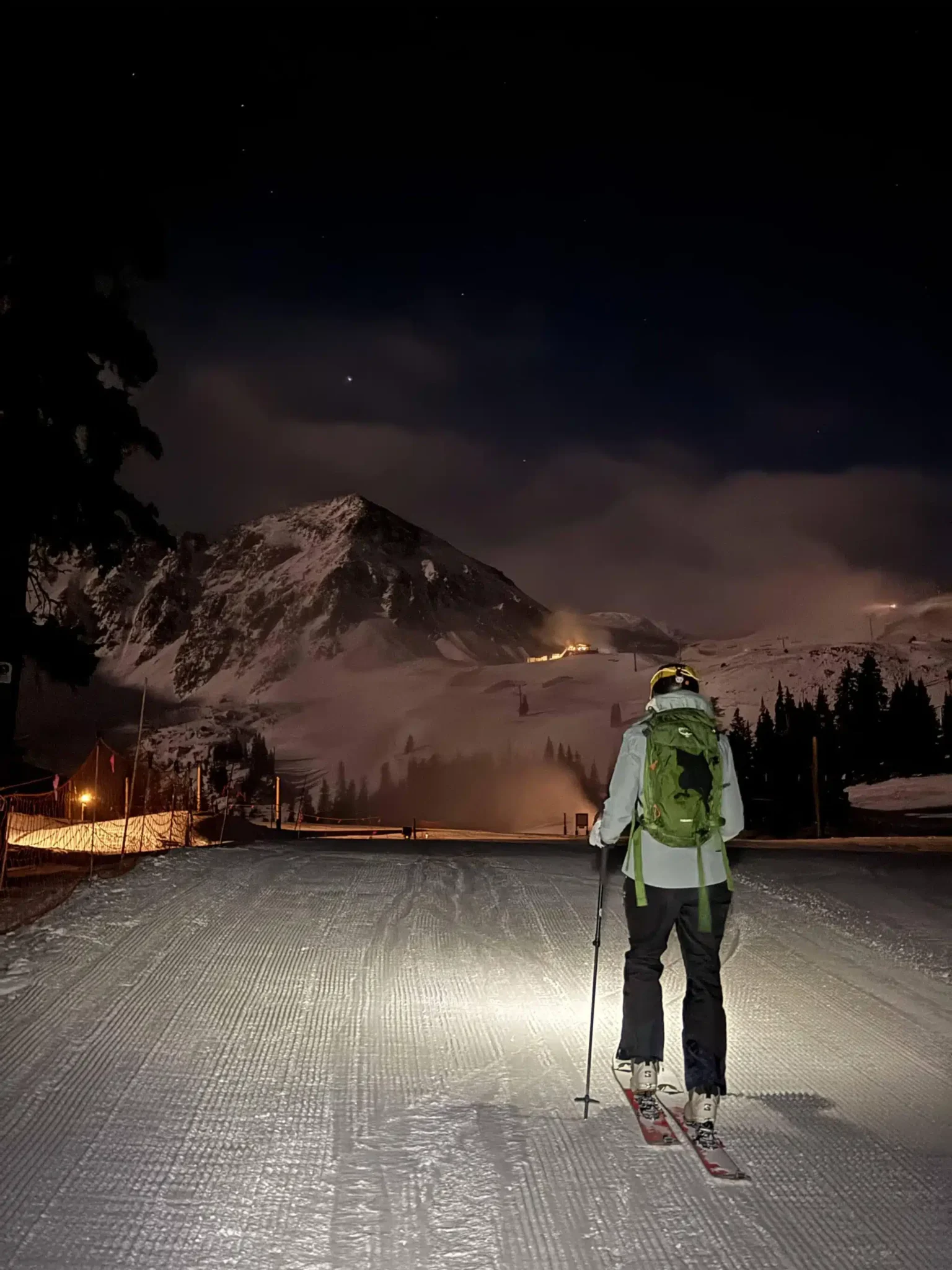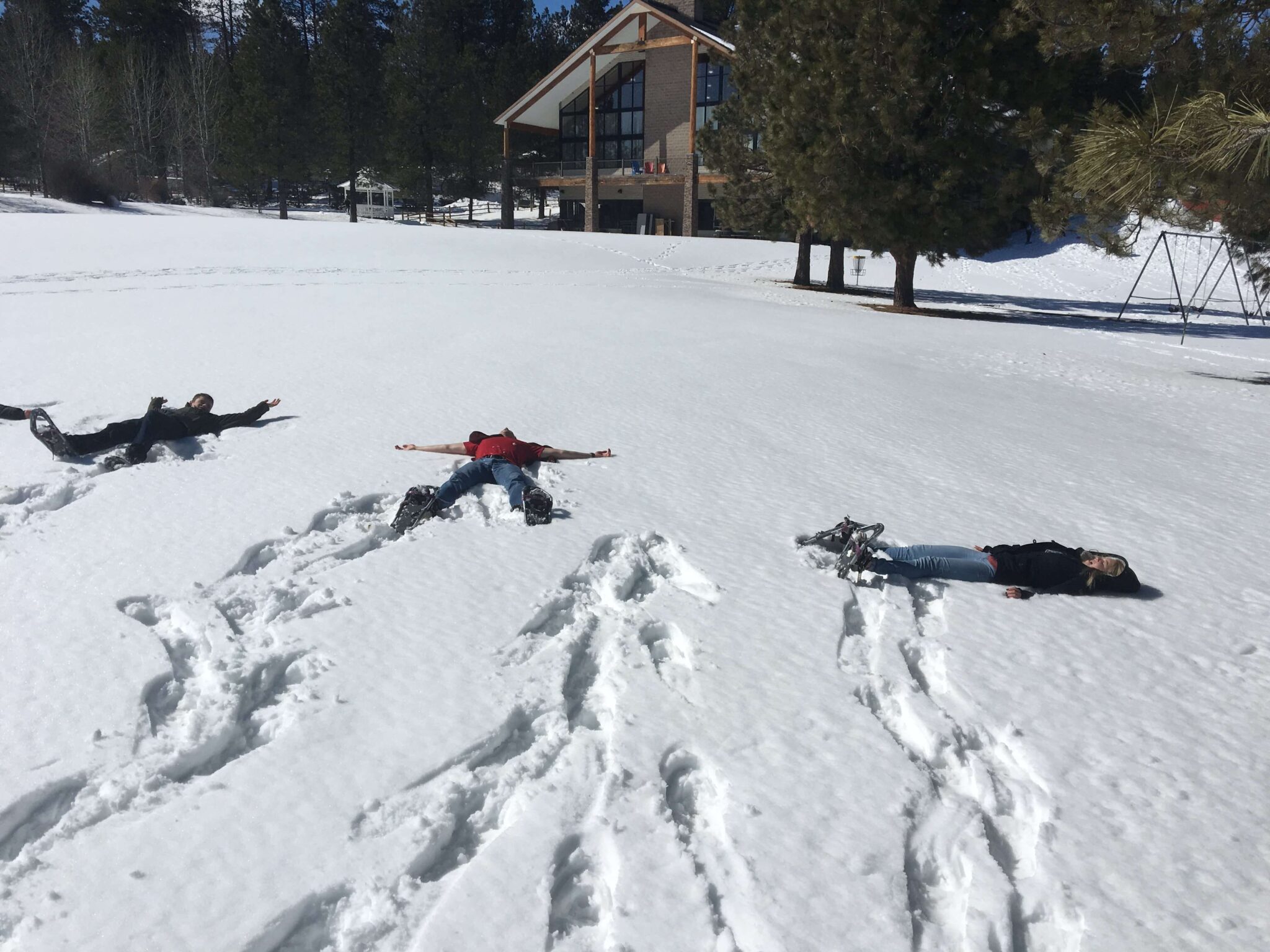Sparks spattered the edges of the fire ring as I stoked the fire on a recent family camping trip. The temperature dropped as the sun slid behind tall pines, extending shadows over our site. It was almost bedtime for the kids, which meant I’d have ample time to stare into the flames and get lost in their allure. Perfect!
Wrong. It was only 7:00.
When something goes by many names, it often means it touches many people. Seasonal Affective Disorder. The Winter Blues. Seasonal Depression. Studies show that it affects roughly 5% of the United States population, with a greater prevalence among women and a rising likelihood the further north of the equator you go.

It’s something that I’ve felt at varying levels throughout my life. A couple of years ago, I experimented with various lifestyle treatments and found a reliable help among them. Let’s talk about hiking for seasonal depression!
What is Seasonal Affective Disorder?
Seasonal Affective Disorder, also known as S.A.D, Seasonal Depression, or casually referred to as the Winter Blues, is a temporary shift in mood that can be attributed to the season (literal, not metaphorical) you’re in. Environmental factors like lack of sunlight, lower activity levels, and discomfort from the weather can contribute to depression that is alleviated when those factors are eliminated.
When Does Seasonal Depression Begin?
Seasonal Depression can begin at different times for different people. Weather patterns will impact when you start feeling your symptoms. So can your location on the globe. Typically, people further south have a shorter window for SAD to set in than people to the north.
What Does Seasonal Depression Feel Like?
Seasonal Depression feels much like depression itself. Generalized fatigue, lack of motivation, and feeling disconnected from or unable to do your daily routine can all be a part of Seasonal Depression.
What Helps Seasonal Depression?
Treating Seasonal Depression can involve prescription intervention, especially if you have other mental health treatments already underway. Talking with your doctor is a good idea. Many people find, as I have, that SAD responds well to certain lifestyle modifications. Light therapy, herbal and vitamin supplication, and embracing activities that bring joy are helpful when dealing with extended hours of darkness and weather we may not enjoy as much.
There’s another treatment available in one way or another. Let’s talk about the profound impact that Nature can have on mental health.
Understanding the Connection Between Nature and Mental Health
You know that feeling of validation when you check your FitBit/NewestEquivalent and find out that yes, you HAVE hiked 2 miles longer than your trail app told you you would? That’s how I feel when science backs up my own experience of Nature’s impact on mental health.
A psychoanalysis named Erich Fromm coined the term “Biophilia” to encapsulate the phenomenon of humans gravitating toward other living things. Now, we have “biophilic design” in architecture, attempting to bring more of Nature into our living spaces. That’s great and all… but it’s easier to get ourselves outside, don’t you think?
The ways we can engage with Nature are endless. Hiking and camping are two of my favorites, obviously. But even simple, 10-minute walks to spot birds, hear the wind in the trees, or identify random plants help me breathe more freely when life has me wound up tight.

Studies Show Nature Reduces Anxiety and Depression
I’ve found that dragging myself out of bed to walk 14 miles around our local lake is the best treatment for the “Bleh” of late January. Something about being around water is calming and invigorating at the same time.
Science agrees.
Over the past decade or so, several studies have routinely indicated that time spent in nature shows measurable improvements in mood, self-esteem, energy levels, and overall well-being. Both green spaces (parks, forests, trails, etc) and blue spaces (lakes, beaches, waterways) work. Even within variables like socioeconomic status, geographical location, and other factors that generally play into mental health studies, results are consistently positive across the board, varying only in degree. The reason is simple.
We. Are. Nature.
Refusing to forget that fact by regularly communing with Her can play an important role in supporting our mental health during the time of year She goes dormant.

Hiking to Handle Seasonal Depression
Cultures around the world orient themselves around the rhythms of Nature, and I think we’d be wise to do the same. We’re part of Nature ourselves, and it’s okay to slow down and take it easy through the winter.
But we’re not bears! Our bodies may get depressed or lack vigor, but our metabolisms don’t slow down for hibernation. We have to find ways to utilize the seasons’ offerings to bolster our mental health. When the Winter Blues come to call, resist the urge to hibernate.
Here’s how to face the elements and embrace the healing power of a hike.
- Wear Layers
It may be tempting to just throw on the heaviest thing you own and head outside. But as your core temperature rises with activity, you’ll need to be able to shed something without becoming too exposed. Avoid sweating when it’s cold outside because sweating is your body’s way of dropping your temperature fast… which can become a problem when you’re on the trail. Layering up lets you determine the appropriate level of insulation from moment to moment.
2. Drink Water
If you’re anything like me, ice in my water is a way of life. But when air temperatures drop, keeping your core temperature up is critical. Avoid ice, but don’t avoid drinking your water. It’s still important to hydrate, even when it’s cold. Drain that Nalgene.
3. Stay Alert
Wearing a beanie can mean your ears are covered. That can make paying attention to your surroundings hard, especially if you tend to zone out on the trail. But it’s important to stay alert. Watch for icy patches to avoid falls, and remember that predators can still be active during winter.

Winter Camping for Seasonal Depression
You can take your SAD treatment to a new level by hitting the trail for days at a time. Spring may seem like the best option for backpacking, but every season has perks. Winter offers a bug-free experience and open trails with fewer campers to arm wrestle for your favorite sites.
One word of caution on this note… you may be tempted to think you don’t need to use your BearVault during hibernation season. That would be incorrect.
Besides the fact that park regulations don’t change from season to season, you also have to contend with the fact that hibernation itself is changing. Warming weather patterns, disruption of their natural habitats, and slim harvests during hyperphagia season are causing a trend of disrupted and shorter hibernations in bears.
You can’t assume that a winter backpacking excursion to cure your Winter Blues will be bear-free. But you shouldn’t let that prevent you from waving goodbye to your dark bedroom and finding a trailhead. Just keep up your regular bear-aware backpacking precautions and be on your merry way!
- Keep Attractants Locked Up
Use your BearVault to keep all attractants safe. That includes things like deodorant, toothpaste, sunscreen, and empty wrappers. A hard-side container is a requirement in many locations, regardless of when you visit.
2. Bring Bear Protection
If you happen upon a bear awake in the winter, you’ll want to be prepared. Are you more likely to have a negative encounter? I can’t say! But it’s safe to guess that an awake bear is awake for a reason. It could have been disturbed awake, putting it in defensive mode. It could be up to find extra food, so it could be extra interested in your pack. Either way, having bear spray handy (and knowing how to use it!) will keep you ready to drive it away.
3. Sleep Separate from Food
Don’t keep your food in the tent with you. You should be cooking away from it, too! No need to bathe your sleeping quarters in the aroma of chili, right? As soon as your evening meal concludes, lock up your BearVault and leave it 70 paces away from your pillow.
Fight Seasonal Depression with Nature
As I type this, I’m cozied up in a coffee shop, sipping a latte and enjoying the low-light mood. It’s autumn, after all… my favorite season of all! But touch base with me in 3 months, and I’ll be over it, yearning for spring. The grey will have gotten to me, and the cold will have me muttering under my breath as I head out to do the chores on our little farm.
BUT… I’m setting my intention now. This winter, I’ll continue the treatment I’ve found works best. Daily strolls to immerse myself in Nature, training myself to appreciate Her beauty in every form and embracing the rhythms She offers.
Author Profile

Jessica Cockroft
Jess merges her passion for words and an insatiable longing for adventure as an outdoor freelance content writer and marketer. When she’s not busy stringing words together you’ll probably find her planning another camping trip for her crew of kids or taking care of the homestead. You can find her on LinkedIn and Instagram, as well as on her own website.



